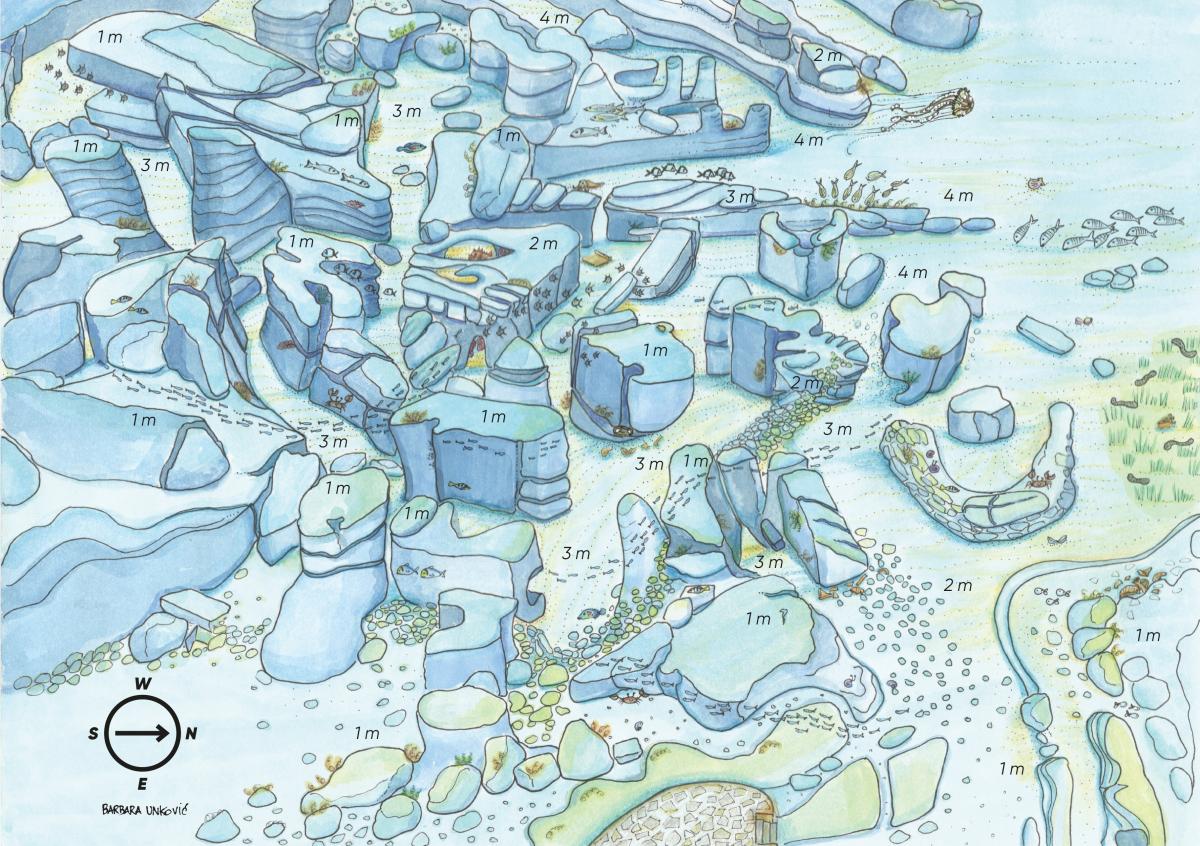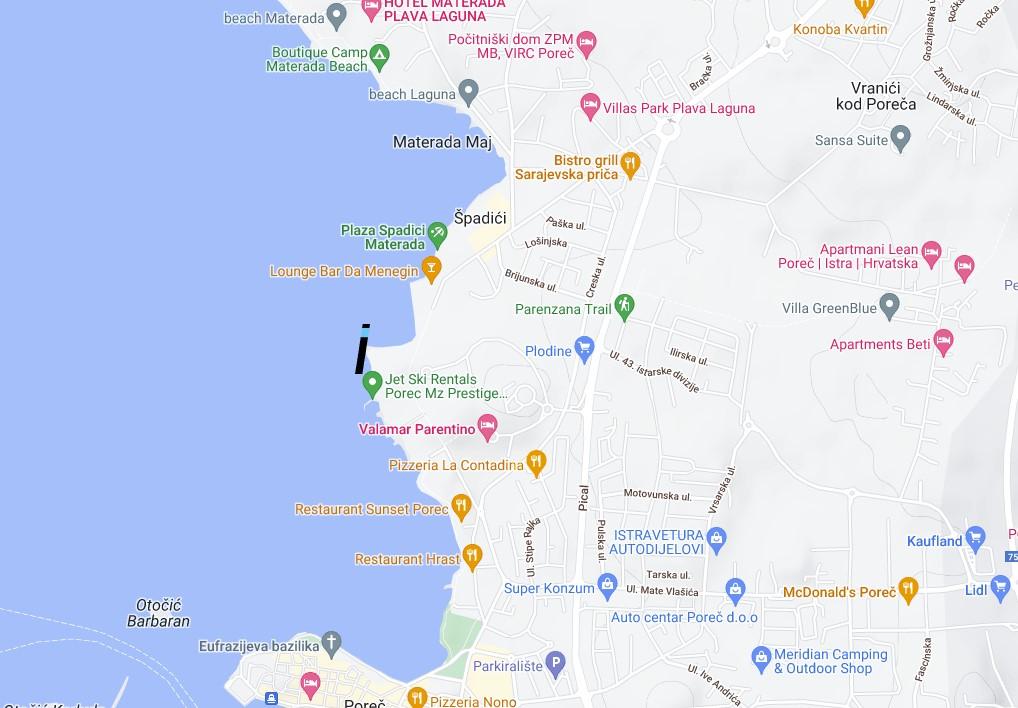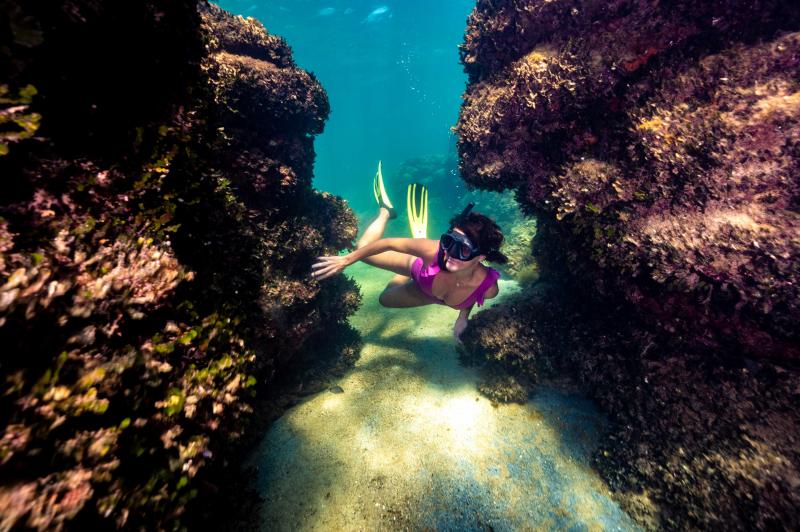Poreč Snorkeling
Dive into the magical world of the Adriatic, take a peek under the surface and enjoy the beauty of the Istrian undersea. The shores of our green peninsula hide numerous attractions, each destination is different and offers its own special features. Welcome to the world of snorkeling!
*****************************************************************************************
Pical
In the Pical area of Poreč, in front of the Pentola restaurant, several large pine trees tower over the paved sunbathing area with the stairs entering the sea. And right here, facing the open sea, the exploration of the mysterious snorkelling location begins.
If you carefully observe the underwater from the shore, you will notice a stone labyrinth, bordered by the turquoise colour of the sandy bottom on the right, extending towards the deep. This location is special precisely because of the interesting formation of large stone blocks scattered on the sand, which closely resemble the floor plan of the old core of Poreč drawn back in the Roman times. It is fascinating that the remains of the ancient past can also be found there.
Having entered the sea, start swimming deeper. Small waterfall-like stones will lead you to the entrance to the stone labyrinth. There is a low stone embankment, a trace of the ancient past, which was built by the Romans. It should be noted, however, that at that time the sea level was approximately 2 meters lower than today. This structure resembles the edge of a pond that would often be found next to a country villa. Here and there, roof tiles protrude from the sand. When roof tiles were replaced in Roman times, it was very common for master builders to throw the old ones into the sea. Archaeologists have also found the remains of a Roman breakwater on this cape, so it is not surprising that the remains of various ceramics, including pieces of amphorae, can also be found at the bottom.
Before entering the stone labyrinth, you will notice a small sandy square, resembling a Roman forum, branching in 3 directions. Sandy paths are located at a depth of 3 meters, while the rocks reach almost to the surface. The central part of the labyrinth is furrowed with gaps, stone arches and narrow passages, hiding cuttlefish, the tompot blenny, damselfish, sea breams and the warty crab with its distinct brown colour. You'll recognize it by its solid, smooth armour and the large pincers it likes to spread in defence.
Red and pink rose-like moss animals hide in small caves. Brown algae turfs sway with the passage of the sea current. This rocky labyrinth is a favourite hiding place of sea basses and mullets, while small fish swim around large boulders.
Many drifters such as compass-jellyfish pass through this sea route. It is easily recognizable by its compass drawn hat and long tentacles, that can reach up to 1 meter. It looks wonderful, but don't touch it because it can burn, leaving scars on the skin. In the unusual labyrinth you can also find a lobster skilfully hiding. However, its long red tentacles give it away because of its curiosity. You will recognize its hiding place by the small sand hill it dug out from under the rocks.
Pical is an interesting snorkelling location everywhere you turn because, when you turn a corner and look behind, sometimes some of the path intersections will look like carved by hand. Near the protective line, there are wider sandy roads as if someone had arranged them that way on purpose. On the sandy plateau on the right, you can see larger shoals of sand steenbras grazing on the sand. Their body is elegantly elongated and silver, featuring transverse stripes.
Important notes While exploring the snorkelling location of Pical, keep in mind that the line of safety and pleasant diving is a protective barrier, marked by a cork line, as the maritime traffic here is very busy. If you want to continue exploring further north, it is important to stay within the protective barrier.


Add to favorites





